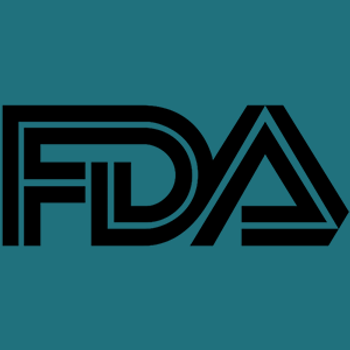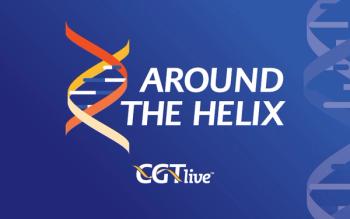
CGTLive's 2024 Pillars of Progress: Most-Watched Conference Interviews
In 2024, CGTLive spoke with experts at various medical conferences to seek their insight on the data they presented and more.
Throughout 2024, the CGTLive® team closely tracked advancements in cell and gene therapy, with a goal of spotlighting the ongoing developments toward treating a wide range of medical conditions. These efforts included holding in-depth conversations with experts in the clinical care of these individuals, as well as in cell and gene therapy development, culminating in our coverage of each step of progress that the most exciting cellular and genetic treatments have made along the pipeline.
From major data publications and presentations to FDA decisions and major medical meetings, the team spent all year bringing the latest information to the website's front page.
One of the key places to find the latest updates on these treatments is during major medical society meetings. In 2024, our team covered updates from meetings of organizations across the breadth of medical specialties in search of the biggest news in cell and gene therapy.
Here, we'll highlight some of the most-watched interviews from CGTLive's conference coverage this year. Click the buttons to view these videos.
Alexandra Collin de l’Hortet, PhD, on Evaluating Epigenetic Gene Therapy for the Treatment of FSHD
“The key takeaway is that we can rescue methylation on that particular locus in the genome and that correlates very well and that translates very well into a suppression of the toxic gene target that is the cause of that disease—a complete reduction of cell death or apoptosis and eventually a rescue of muscle function. Those are the key takeaways from the product that starts with the root cause, the methylation, and all of the positive effect that restoring methylation has on that disease.”
– Alexandra Collin de l’Hortet, PhD
Epic Bio is currently developing EPI-321, an investigational epigenetic gene therapy product intended to treat facioscapulohumeral muscular dystrophy by restoring methylation of the aforementioned DNA region to normal levels. EPI-321 is a CRISPR-based system delivered by an adeno-associated virus vector and functions by adding a methylation mark. The company presented preclinical results obtained in several different models at
Georg Schett, MD, on Exploring CAR-T for Autoimmune Disease
“The relapse rate is very low, and there have been occasional relapses reported in the field by other studies, but also with low dose CAR T-cell therapy, because that was the starting dose. So, this has to be interpreted in the right way, and I would say that relapses occur, of course, nothing is 100%, but so far, it looks that most of the people enjoy a drug free remission for a long time."
–Georg Schett, MD
Safety and some preliminary efficacy were seen in a pair of clinical studies—the CASTLE basket study and a phase 1 clinical trial for CC-97540 (Bristol Myers Squibb)—that evaluated CD19-directed chimeric antigen receptor T-cell (CAR-T) therapies in patients with a variety of refractory autoimmune and rheumatic diseases. At the
Michael Severino on In Vivo Gene Editing With RNA Gene Writers
“Our programs are based on a platform that we call our RNA gene writers. So, our RNA gene writers modify DNA, but they do it using all RNA constructs. So, the protein that does the work is delivered as an mRNA, and the template which contains the instructions is an RNA, and that enables a number of advantages.”
–Michael Severino
Tessera Therapeutics is aiming to develop effective and safe in vivo, nonviral gene and cell therapies, which could eliminate issues inherent with current modes of approved gene therapies such as ex vivo chimeric antigen receptor (CAR) T-cell therapies and adeno-associated virus (AAV) therapies. The company presented on a number of these programs at
Shankar Ramaswamy, MD, on Bringing Gene Therapy to Common Diseases
“The technology has really matured to a point where we can take that next leap as a field to bring gene therapies into a broader universe of diseases. I think we as a field need to figure out how we can scale the technology, how we can bring down the cost, and how we can improve throughput and quality of the products that we engineer and manufacture. But those are solvable challenges.”
– Shankar Ramaswamy, MD
One company currently seeking to bring AAV vector-based gene therapy to common diseases is Kriya Therapeutics. Kriya gave 6 presentations regarding their work on this endeavor at
John Murphy, PhD, on Using Gene Editing to Tackle Primary Hyperoxaluria Type 1
“What we are able to do—we hope, if this product works as intended—is to provide a once in a lifetime treatment that will really allow patients to have normalized oxalate and avoid all the complications of the disease.”
– John Murphy, PhD
Arbor Biotechnologies is currently developing ABO-101, a lipid nanoparticle (LNP)-delivered Cas12i2-based gene editing approach to treating primary hyperoxaluria type 1. ABO-101 is intended to permanently inactivate the HAO1 gene in the cells of the liver via a one-time treatment. Preclinical data from mouse model and nonhuman primate (NHP) research regarding ABO-101 were presented by the company at
Newsletter
Stay at the forefront of cutting-edge science with CGT—your direct line to expert insights, breakthrough data, and real-time coverage of the latest advancements in cell and gene therapy.












































